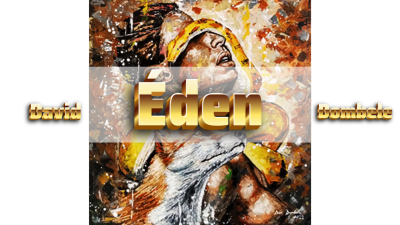
José Francisco Kwango stands as one of Angola's most powerful contemporary voices, not for his celebratory or commemorative pieces, but for his unflinching willingness to paint the darker side of the human condition. His work often delves into the psychological shadows left by decades of struggle, transition, and internal conflict.
Nowhere is this exploration more concentrated than in his striking piece, "Desespero" (Despair). This painting is not merely sad; it is heavy, dense, and suffocating. Kwango masterfully avoids sensationalism, instead using color and form to capture the profound, silent exhaustion that follows great emotional or societal strife.
The Anatomy of Despair
"Desespero" is rarely a literal scene. Kwango generally strips away external context, forcing the viewer to confront the raw, abstract feeling itself. The painting serves as a psychological portrait, representing a state of being where hope has been exhausted and silence prevails.
In many interpretations of this work, the subject is not a single person, but the collective spirit buckling under pressure. It speaks to the burden of historical memory, economic instability, or the deep personal alienation that can exist even amidst a crowd. The despair is not an outburst of grief; it is the quiet, heavy resignation that settles in the absence of a visible path forward.
A Palette of Profound Absence
Kwango's genius in "Desespero" lies in his restricted, yet powerful, color palette. He typically leans heavily on ochres, deep indigos, and near-black charcoals. These colors work together to create a visual vacuum, consuming light rather than reflecting it.- The Dominant Black/Indigo: This color acts as the emotional anchor, symbolizing a crushing void or the infinite depth of sorrow. It pulls the viewer inward, suggesting a lack of boundaries between the suffering figure and their environment.
- The Flash of Ochre or Rust: Often, a single, agitated streak of muddy yellow or burnt orange cuts across the canvas. This is not a burst of hope; rather, it represents the residual pain or the chaotic energy of the mind struggling against collapse. It is the last flicker of feeling before emotional numbness sets in.
The texture is often coarse, built up through thick layers that look scored or scraped away, suggesting an aggressive process of creation and destruction. The surface itself feels wounded, reflecting the trauma of the subject.
Form and Suffocation
In terms of composition, "Desespero" often features heavy, monolithic forms that dominate the frame. These shapes appear to weigh down the canvas, acting as visual metaphors for inescapable burdens.
If a human-like figure is present, it is usually distorted, huddled, or featureless. Kwango denies the figure individual identity, making the experience universal. The lines are not crisp but smeared and blurred, suggesting the confusion and mental fog that accompany true despair. The composition is unbalanced and claustrophobic, giving the impression that the physical space itself is closing in on the subject.
Conclusion: A Necessary Confrontation
"Desespero" is not a painting we admire for its beauty, but for its honesty. José Francisco Kwango uses his formidable technical skill to create a necessary confrontation-a visual document of a universal, yet often unspoken, emotional reality.
In choosing to highlight these darker truths, Kwango does a great service: he validates the experience of those who are struggling and demands that the viewer not look away. It's a powerful reminder that while abstraction may remove reality, it can bring us closer to the truth of emotion.



















Comments